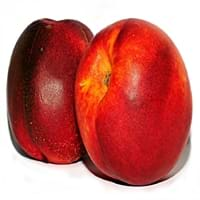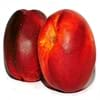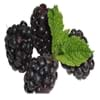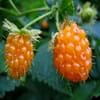Health Benefits
Cancer prevention, Heart care
Arthritis treatment, Cancer prevention, Heart care
General Benefits
Anti oxidant properties, Boosts immune system, Digestive aid, Eye care, Helps in weight loss, Maintains healthy cholesterol level
Anti-inflammatory properties, Cures cough, Cures fever, Digestive aid, Healing of wounds, Maintains healthy cholesterol level
Skin Benefits
Anti-aging benefits, Reduces wrinkles, Skin rejuvenation
Anti-aging benefits, Brightens and lightens complexion, Reduces wrinkles, Treatment of dark spots
Hair Benefits
Protects hair
Promotes longer and healthier hair, Protects hair, Rejuvenates scalp, Shiny hair
Allergy Symptoms
Anaphylaxis, Asthma, Breathing difficulty, Diarrhea, Hives, Itching, Itchy eyes, Skin rash, Sneezing, Swelling of mouth, tongue or lips, Tingling sensation in mouth, Vomiting, Watery eyes, Wheezing
Abdominal cramps, Hives, Itching, Nausea, Wheezing
Side Effects
Allergic reaction, Headache, Nausea
Allergic reaction, Skin rash, Possibly unsafe during pregnancy
Best Time to Eat
Best if taken as a breakfast (or empty stomach), As a snack in the late afternoon, Eat the fresh ones, avoid mixing with any other foods, don't eat after meal., Morning time (before lunch)
As a snack in the late afternoon, Eat the fresh ones, avoid mixing with any other foods, don't eat after meal., Morning time (before lunch), Strictly avoid empty stomach
Vitamin B5 (Pantothenic Acid)
Vitamin C (Ascorbic Acid)
Vitamin K (Phyllochinone)
Calories in Fresh Fruit with Peel
Not Available
Calories in Fresh Fruit without Peel
Not Available
Calories in Frozen Form
Not Available
Not Available
Calories in Canned Form
Not Available
Season
Autumn, Summer
Winter
Varieties
Arctic Jay, Artic Rose, Artic Star, Armking, Desert Dawn, Fairlane, Fantasia, Silver Lode, Snow Queen, Stanwick and Stark Sunglo
Clementine, Dancy, King Mandarin, Murcott, Ponkan, Robinson, Satsuma and Sunburst
Color
Orange, Pink, Red, Yellow
Orange
Inside Color
Yellow
Orange
Texture
Succulent
Succulent
Origin
China
South-Eastern Asia
Grows on
Trees
Not Available
Soil Type
Sandy loam
Well-drained
Climatic Conditions
Sunny, Warm
Sunny
Facts about
- The name ‘nectarine’ is with reference to the sweet food the gods eat, ‘nectar’.
- Nectarines are sometimes called ‘shaved peaches’ because their skin is smooth with no fuzz.
- It is known by another name ' Mandarin'.
- Oil extracted from its peel is used in various skin and hair care products.
- Tangerines is also known as the ‘Christmas Orange’ because it is used to stuff kids' stockings..
Spirits
Not Available
Not Available
Cocktails
Yes
Not Available
Other Countries
Argentina, Chile, Egypt, Greece, Iran, Italy, Spain, Turkey, United States of America
Brazil, Iran, Italy, Japan, Korea, Morocco, Spain, Turkey
Top Importer
Germany
China
Botanical Name
Prunus persica
Citrus reticulata
Synonym
Not Available
Citrus clementina or Citrus nobilis
Subkingdom
Tracheobionta
Tracheobionta
Division
Magnoliophyta
Magnoliophyta
Class
Magnoliopsida
Magnoliopsida
Species
P. persica
C. reticulata
Generic Group
Rose
Citrus fruit
Compare Nectarine and Tangerine
It is important compare Nectarine and Tangerine as both the fruits have a different nutritional value. Their comparison can be done on the basis of their vitamin and mineral content, calories, benefits as well as characteristics, making it easier for us to choose the best fruit for our diet. Their general health benefits are as follows:
Nectarine Benefits: anti oxidant properties, boosts immune system, digestive aid, eye care, helps in weight loss and maintains healthy cholesterol level.
Tangerine Benefits: anti-inflammatory properties, cures cough, cures fever, digestive aid, healing of wounds and maintains healthy cholesterol level.
Fruits are also used as a remedy for various hair problems. The hair benefits of Nectarine are: protects hair and hair benefits of Tangerine are: promotes longer and healthier hair, protects hair, rejuvenates scalp and shiny hair. Some fruits are known to cause allergic reactions. The allergy symptoms of first fruit are: anaphylaxis, asthma, breathing difficulty, diarrhea, hives, itching, itchy eyes, skin rash, sneezing, swelling of mouth, tongue or lips, tingling sensation in mouth, vomiting, watery eyes and wheezing and the symptoms of second fruit are: abdominal cramps, hives, itching, nausea and wheezing. Get sorted Nectarine vs Tangerine comparison with the help of fruit comparison tool by fruitvs.com.









